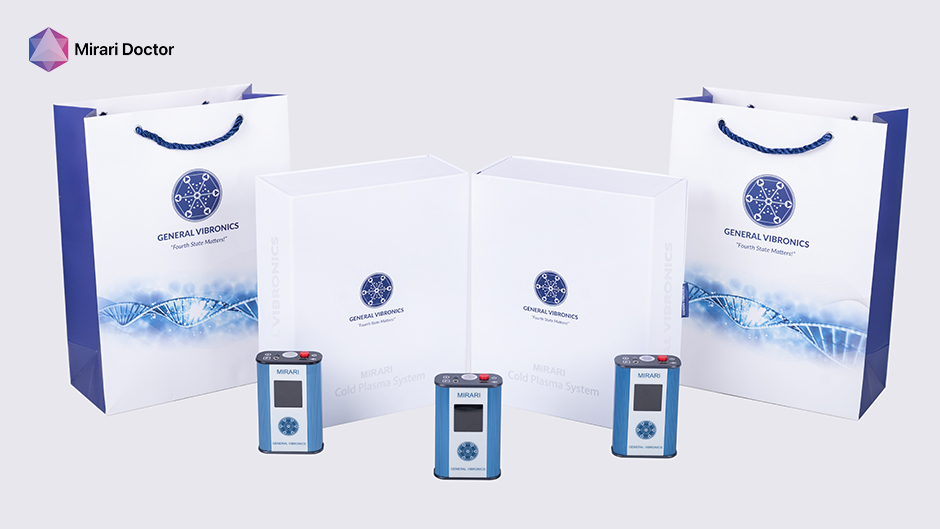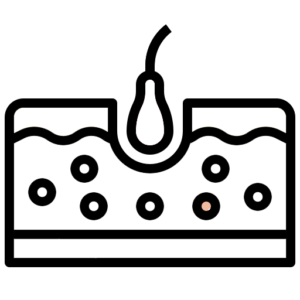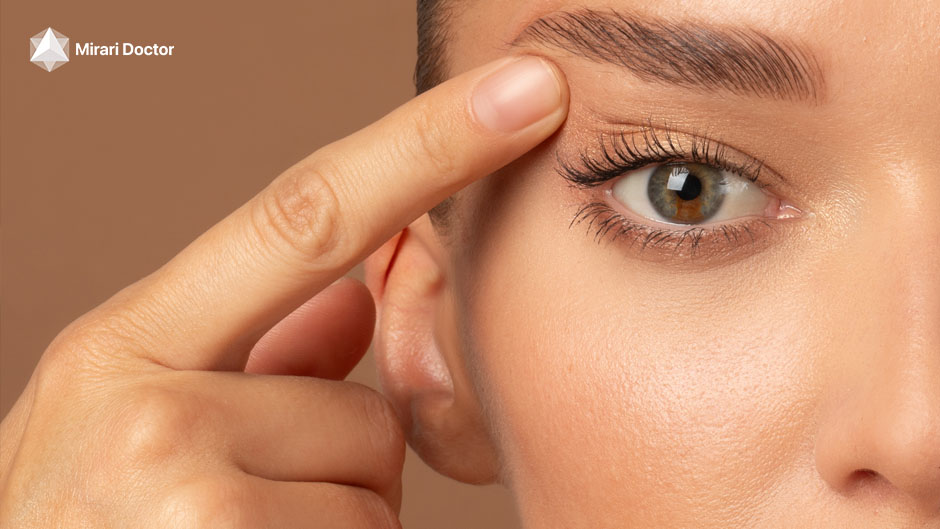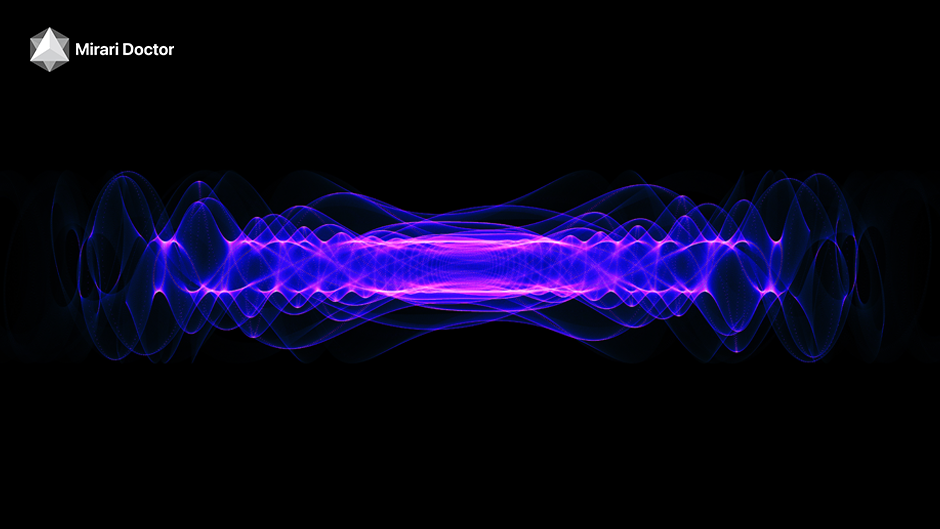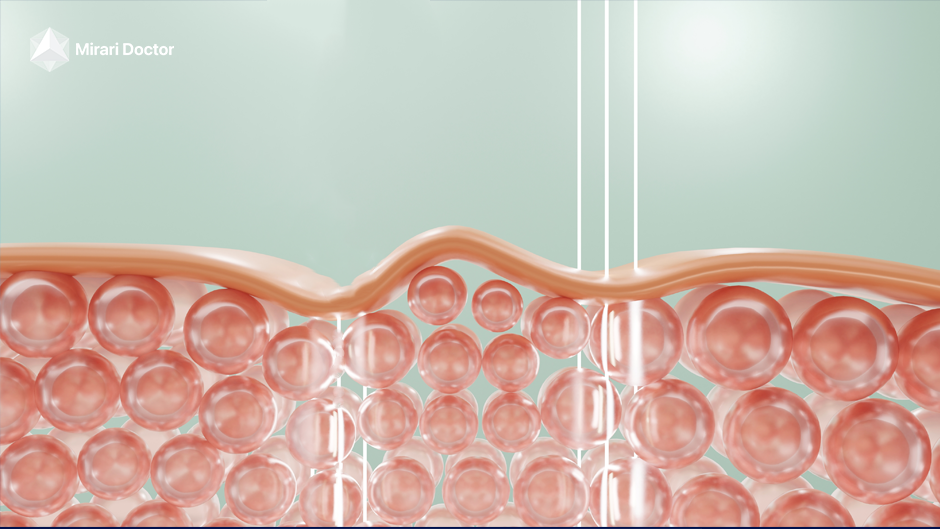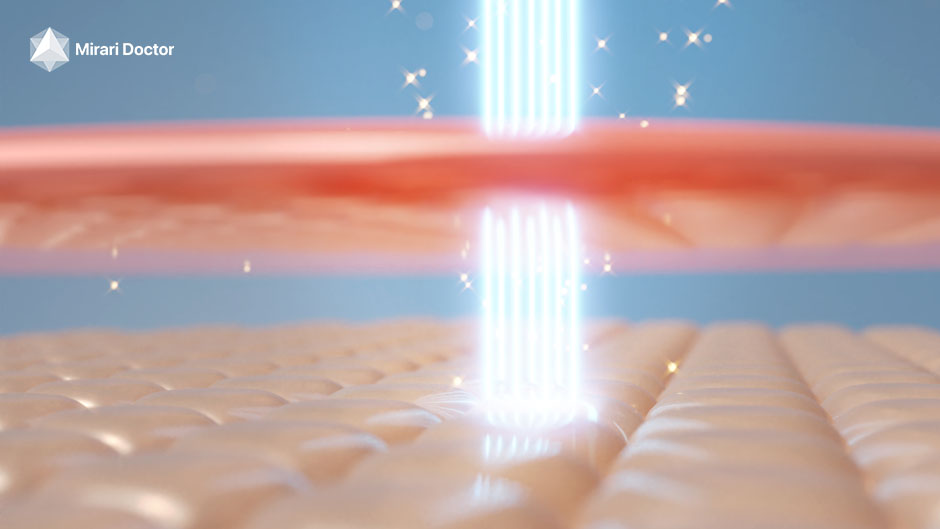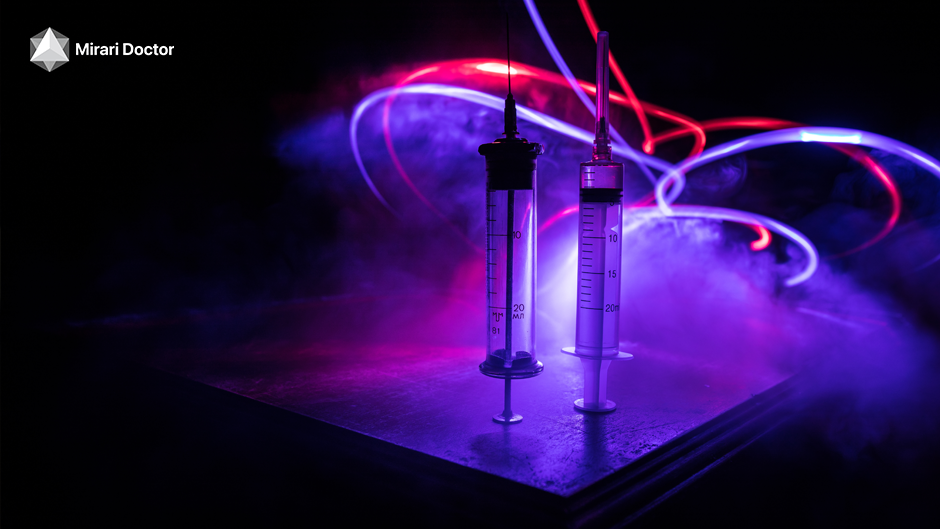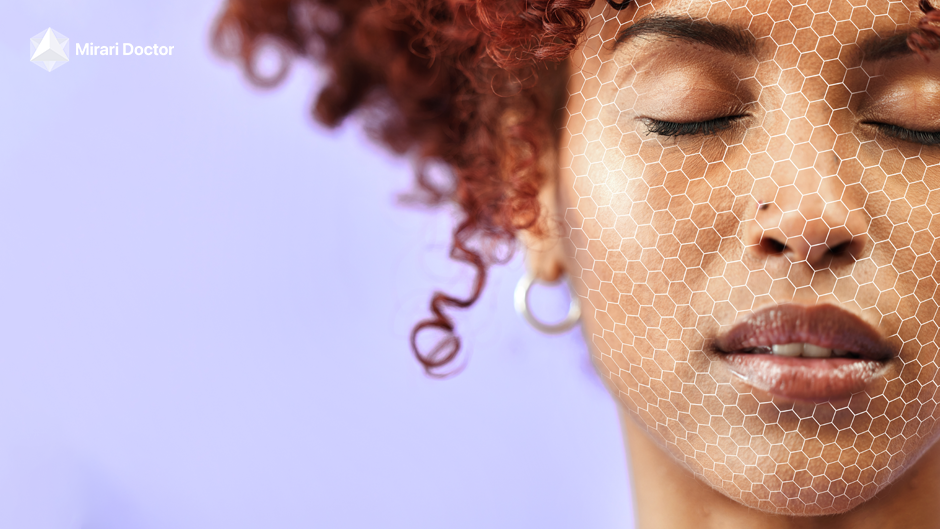
You May Be Interested In:
Cold plasma treatment, also known as Cold Atmospheric Plasma (CAP), is a groundbreaking innovation in dermatology that employs ionized gases at atmospheric pressure and low temperatures. Exciting developments in this field highlight its potential to advance plasma technology applications through innovative technical properties. By leveraging a mixture of charged particles, reactive oxygen, and nitrogen species, cold plasma can target various skin conditions in a non-invasive, effective manner. This technology promises to enhance skin health, expedite wound healing, combat infections, and rejuvenate aging skin. Through exploring its applications, mechanisms, and benefits, we can uncover why cold plasma is setting new paradigms in dermatological therapies.
One innovative device harnessing the power of cold plasma is the Mirari Cold Plasma device, developed by General Vibronics. As the world’s first handheld device to utilize a unique form of non-invasive cold plasma by harnessing the power of nitric oxide (NO), the Mirari opens up exciting possibilities for at-home cold plasma treatments. By making this revolutionary technology more accessible, devices like the Mirari are poised to transform the landscape of dermatological care.
What is cold plasma treatment?
Cold plasma treatment, often referred to as Cold Atmospheric Plasma (CAP), utilizes ionized gases, such as argon, nitrogen, or air, at room temperature to generate plasma a state of matter consisting of an energetic mix of ions, electrons, and neutral particles. Unlike traditional plasma, which requires high temperatures, cold plasma can be produced at lower temperatures, making it suitable for medical applications without causing thermal damage to tissues.
The Mirari Cold Plasma device exemplifies this principle by generating a unique cold plasma enriched with nitric oxide. Nitric oxide is known for its vital roles in the body, including promoting wound healing, reducing inflammation, and enhancing microcirculation. By incorporating nitric oxide into the cold plasma, the Mirari device aims to amplify the therapeutic benefits of cold plasma treatment.
This innovative approach opens doors to new skin care possibilities, providing a safer and more effective alternative to existing thermal-based treatments. Moreover, its potential to address various dermatological conditions, ranging from infections to skin rejuvenation, is backed by research and clinical studies, underlining its promising role in modern dermatology.
Mechanism of action
The mechanism of action of cold plasma treatment hinges on its unique ability to generate reactive species and electric fields that interact with biological tissues in beneficial ways. Picture cold plasma as a gentle yet effective toolkit that doesn’t burn but rather meticulously repairs and rejuvenates. Here’s how it works:
- Antimicrobial Activity: Cold plasma’s reactive oxygen and nitrogen species are akin to microscopic warriors, penetrating cell walls of bacteria, disrupting their DNA and proteins, eventually leading to microbial cell death. This potent antimicrobial property makes CAP a formidable opponent against infections, particularly in chronic wounds. For instance, a study published in the Journal of Clinical and Aesthetic Dermatology highlighted CAP’s efficacy in significantly reducing bacterial load on infected wounds, thus promoting a cleaner, infection-free environment conducive to healing. The Mirari device’s nitric oxide-enriched plasma may enhance this antimicrobial effect, as nitric oxide is known to play a role in the body’s natural defense against pathogens.
- Enhanced Healing: Cold plasma accelerates the healing process by stimulating cell proliferation and migration. Imagine it as a conductor orchestrating a symphony of cellular activities keratinocytes and fibroblasts, the skin’s building blocks, are encouraged to migrate to the wound site, proliferate, and synthesize essential extracellular matrix components like collagen. Studies have shown that CAP can expedite the reparative phases of wound healing, transforming sluggish chronic wounds into rapidly closing sites of regeneration. The nitric oxide delivered by the Mirari device may further support this healing process, as nitric oxide is involved in regulating inflammation, angiogenesis, and collagen deposition, all crucial aspects of wound repair.
- Inflammation Reduction: Inflammation, a double-edged sword in wound healing, can be modulated by cold plasma. It manages to strike a balance, akin to tuning an old radio to the perfect frequency. By influencing cytokine production and immune cell activity, CAP minimizes excessive inflammation while fostering a conducive environment for the proliferative phase of healing. The European Journal of Dermatology reported that CAP treatment significantly reduces inflammatory markers, aiding in the transition from an inflamed state to active tissue regeneration. The Mirari device’s nitric oxide component may contribute to this anti-inflammatory effect, as nitric oxide has been shown to regulate inflammatory responses in the skin.
- Stimulation of Cellular Signaling Pathways: Cold plasma activates vital intracellular pathways that govern cell survival, migration, and proliferation. Just like a well-oiled machine, CAP fine-tunes these pathways, boosting the expression of genes linked to wound healing, such as those responsible for growth factor production and collagen synthesis. For example, research published in Plasma Sources Science and Technology demonstrated that CAP enhances gene expression related to the regenerative processes, underscoring its potential to promote robust healing responses. The nitric oxide delivered by the Mirari device may amplify these cellular signaling effects, as nitric oxide is a key signaling molecule involved in various physiological processes, including wound healing and skin homeostasis.
Types of cold plasma devices
Cold plasma devices come in various forms, each tailored to specific clinical applications. This variety is akin to having different tools for different jobs, ensuring the right approach for each skin condition.
One notable example is the Mirari Cold Plasma device, which utilizes nitric oxide-enriched cold plasma in a handheld design. This innovative device brings the benefits of cold plasma therapy into the comfort of one’s own home, making it more accessible and convenient for users to treat various skin concerns. The Mirari’s unique nitric oxide technology sets it apart from other devices, potentially enhancing the therapeutic effects of cold plasma.
Here’s a closer look at the different types of cold plasma devices:
By providing a range of device options, cold plasma technology can be adapted to suit various dermatological needs, from localized treatments to broad-spectrum applications. As research continues to advance, devices like the Mirari Cold Plasma system are pushing the boundaries of what’s possible with cold plasma therapy, bringing innovative solutions to the forefront of skincare.
Applications of cold plasma in dermatology
Cold plasma treatment is expanding its footprint in dermatology, demonstrating remarkable versatility across various skin conditions.
Devices like the Mirari Cold Plasma system are at the forefront of this expansion, offering a unique nitric oxide-enriched cold plasma that may enhance the therapeutic potential of this technology. By harnessing the beneficial properties of nitric oxide, such as its role in wound healing, anti-inflammatory effects, and microcirculatory enhancement, the Mirari device aims to provide a comprehensive approach to various dermatological concerns.
It’s akin to discovering a multipurpose tool in your skincare arsenal. From acne to rosacea and wound healing, the applications are both broad and deep, making it a promising frontier in dermatological therapy. Imagine an approach that not only addresses the superficial symptoms but also dives deeper into the skin’s biological processes, promoting healing from within. This innovative treatment not only holds promise for managing chronic skin issues but also for providing cosmetic benefits, thus capturing the interest of both medical and aesthetic dermatologists.
Acne treatment
Acne, a condition that can significantly impact self-esteem, has found a worthy adversary in cold plasma therapy. Imagine the frustration of battling persistent acne, only to have conventional treatments fall short. Cold plasma steps in as a beacon of hope, armed with a dual mechanism of action: antimicrobial and anti-inflammatory.
The Mirari Cold Plasma device, with its nitric oxide-enriched plasma, may offer an enhanced approach to acne treatment. Nitric oxide has been shown to exhibit antimicrobial properties, potentially augmenting the ability of cold plasma to combat acne-causing bacteria. Additionally, nitric oxide’s anti-inflammatory effects may help reduce the redness and swelling associated with acne lesions, promoting a clearer complexion.
- Mechanisms Involved: CAP generates reactive oxygen and nitrogen species that work much like a microscopic cleaning crew, destroying Propionibacterium acnes, the bacteria implicated in acne. This action is non-invasive, likened to a gentle yet effective broom sweeping away the culprits without disturbing the integrity of the skin. Furthermore, cold plasma reduces inflammation, akin to pouring cooling water on a raging fire, thereby minimizing redness and swelling associated with acne lesions.
- Clinical Evidence: Several studies have demonstrated CAP’s efficacy in treating acne. For instance, research published in the Journal of Cosmetic Dermatology reported significant improvement in lesion count and skin appearance for patients who underwent CAP therapy. The study emphasized that a critical advantage of CAP is its ability to deliver these benefits without the side effects associated with antibiotics or harsh chemical treatments, thus catering to patients who seek gentler alternatives.
- Procedure and Patient Experience: During a typical CAP session, a handheld plasma device, such as the Mirari Cold Plasma system, is hovered over the affected areas. Patients often describe the sensation as mildly tingling a far cry from the discomfort of traditional acne treatments. Sessions typically last 15-30 minutes, and improvements are often visible after a few treatments. This convenience and efficacy position CAP as a compelling option for acne sufferers.
Benefits Over Conventional Treatments:
- Antibiotics: Unlike antibiotics, CAP poses no risk of developing antibiotic resistance.
- Topical Retinoids: CAP offers quicker results without the irritation commonly associated with retinoids.
- Chemical Peels: No peeling or extensive downtime required, making it suitable for those with busy lifestyles.
Rosacea management
Rosacea, characterized by persistent redness and visible blood vessels, can be challenging to manage. Cold plasma treatment offers a novel approach, targeting the root causes of inflammation and vascular issues.
The Mirari Cold Plasma device, with its nitric oxide-enriched plasma, may provide an advantageous approach to rosacea management. Nitric oxide is known to regulate vascular tone and has been shown to exhibit anti-inflammatory properties. By incorporating nitric oxide into the cold plasma, the Mirari device aims to address the underlying vascular and inflammatory components of rosacea, potentially providing more comprehensive relief for patients.
- Mechanisms Involved: CAP’s reactive species help reduce the erythema and inflammation associated with rosacea by targeting the dilated blood vessels and calming the inflammatory processes. It’s as if CAP sends emissaries to negotiate peace in the war zone of inflamed skin, gently coercing the vessels and inflammatory cells to step back and restore balance.
- Clinical Evidence: Studies such as those featured in the Journal of Dermatological Treatment have heralded CAP’s potential in rosacea management. Patients undergoing CAP treatment have reported reduced redness and fewer flare-ups, leading to an overall improvement in skin quality. This evidence suggests that CAP not only alleviates symptoms but also extends the periods of remission between flare-ups.
- Procedure and Patient Experience: Similar to acne treatment, CAP sessions for rosacea involve a handheld device, like the Mirari Cold Plasma system, applied to the affected areas. The treatment is non-invasive and generally well-tolerated, with most patients experiencing significant improvements after 3-5 sessions. The immediate reduction in redness post-treatment is a testament to CAP’s efficacy, offering relief without the need for harsh topical steroids or antibiotics.
Benefits Over Conventional Treatments:
- Topical Steroids: CAP minimizes the risk of steroid-induced skin thinning and dependency.
- Laser Therapy: Cold plasma offers a gentler alternative with no thermal damage, suitable for sensitive skin.
- Oral Antibiotics: Avoids systemic side effects and resistance issues associated with antibiotics.
Eczema therapy
Eczema, characterized by itchy and inflamed skin, represents another arena where cold plasma therapy shines. The chronic nature of eczema makes it a battleground where effective, long-term solutions are highly sought after.
Devices like the Mirari Cold Plasma system, with its nitric oxide-enriched plasma, may offer a promising approach to eczema management. Nitric oxide has been shown to regulate inflammatory responses in the skin and play a role in maintaining skin barrier function. By delivering nitric oxide through cold plasma, the Mirari device aims to address the inflammatory and barrier dysfunction aspects of eczema, potentially providing relief for patients struggling with this chronic condition.
- Mechanisms Involved: CAP mitigates itchiness and inflammation by modulating the immune response and reducing microbial load on the skin. Think of it as CAP orchestrating an immune symphony, harmonizing the skin’s defensive responses while eliminating infectious interlopers.
- Clinical Evidence: Research published in the journal Dermatologic Therapy has shown improvements in skin barrier function and reductions in pruritus (itching) after CAP treatments. These findings underscore CAP’s ability to address both the symptoms and underlying causes of eczema, offering a comprehensive approach to managing this debilitating condition.
- Procedure and Patient Experience: Treatment involves a series of CAP sessions using a handheld device like the Mirari Cold Plasma system, each lasting about 20-30 minutes. Patients typically feel a mild warmth or tingling sensation. Improvements are usually observed within a few sessions, with significant relief from itching and reduced skin lesions. This quick relief and the non-invasive nature of CAP make it an appealing choice for eczema sufferers.
Benefits Over Conventional Treatments:
- Topical Corticosteroids: CAP avoids potential side effects such as skin thinning and systemic absorption.
- Immunosuppressants: CAP presents a safer alternative without the risk of systemic immune suppression.
- Moisturizers and Emollients: While these are essential, CAP provides deeper relief by targeting inflammation and microbial factors.
Wound healing
Wound care is another critical application of cold plasma treatment. Chronic wounds pose a significant clinical challenge, often resistant to conventional treatments.
The Mirari Cold Plasma device, with its nitric oxide-enriched plasma, may provide a valuable tool in wound healing. Nitric oxide is known to play a crucial role in the wound healing process, promoting angiogenesis, collagen deposition, and cell proliferation. By delivering nitric oxide through cold plasma, the Mirari device aims to enhance the natural healing mechanisms of the body, potentially accelerating wound closure and improving patient outcomes.
- Mechanisms Involved: CAP accelerates wound healing by promoting cell proliferation and migration, enhancing tissue regeneration, and offering robust antimicrobial protection. Consider CAP as a superhero swooping in, mobilizing the skin’s repair troops, eliminating infectious villains, and rebuilding the tissue landscape.
- Clinical Evidence: Extensive research, including studies published in the Annals of Surgery, demonstrates CAP’s ability to enhance healing in chronic wounds, diabetic ulcers, and post-surgical incisions. The antimicrobial properties of cold plasma significantly reduce infection rates, while its regenerative effects expedite the healing process. The nitric oxide delivered by the Mirari Cold Plasma device may further amplify these healing effects, as nitric oxide has been shown to stimulate angiogenesis, collagen synthesis, and cell migration, all crucial components of successful wound repair.
- Procedure and Patient Experience: CAP treatments for wound healing typically involve direct application of plasma over the wound area using specialized devices like the Mirari Cold Plasma system. Treatments last 15-30 minutes and are usually performed several times a week until the wound shows marked improvement. Patients have reported reduced pain, faster healing, and decreased wound size, highlighting CAP’s efficacy and patient-friendly nature.
Benefits Over Conventional Treatments:
- Antibiotic Ointments: CAP offers superior antimicrobial efficacy without the risk of resistance.
- Surgical Debridement: CAP is non-invasive, reducing pain and recovery time.
- Hyperbaric Oxygen Therapy: Provides similar benefits with greater convenience and fewer sessions.
Anti-aging benefits
The quest for youthful skin finds a new ally in cold plasma therapy, renowned for its ability to rejuvenate and revitalize.
The Mirari Cold Plasma device, with its nitric oxide-enriched plasma, may offer an innovative approach to anti-aging skincare. Nitric oxide has been shown to stimulate collagen synthesis, improve skin elasticity, and promote microcirculation. By delivering nitric oxide through cold plasma, the Mirari device aims to harness these beneficial effects, potentially enhancing the skin’s natural rejuvenation processes and combating visible signs of aging.
- Mechanisms Involved: CAP enhances collagen synthesis, improves skin elasticity, and stimulates cellular turnover. Picture it as the gardener of your skin, nurturing the cells, pruning away the old, and fostering new growth, resulting in a revitalized, youthful appearance.
- Clinical Evidence: Anti-aging studies published in the Journal of Cosmetic and Laser Therapy have shown that CAP treatment significantly improves skin texture and reduces the appearance of fine lines and wrinkles. The enhanced collagen production post-treatment contributes to firmer, more resilient skin.
- Procedure and Patient Experience: A typical CAP anti-aging session involves a handheld device like the Mirari Cold Plasma system applied to the face, specifically targeting areas with visible signs of aging. Each session lasts around 20-30 minutes, with noticeable improvements often seen after 3-5 sessions. The non-invasive nature and absence of downtime make cold plasma an attractive option for those seeking rejuvenation without the risks associated with more invasive procedures.
Benefits Over Conventional Treatments:
- Botox and Fillers: CAP provides a non-invasive alternative without injections.
- Laser Resurfacing: CAP avoids thermal damage and extensive recovery time.
- Chemical Peels: No peeling or prolonged redness, ideal for patients looking for quick, visible results.
Hair loss treatment
Hair loss, particularly androgenetic alopecia (AGA), affects millions and can be distressing. Cold plasma therapy emerges as an innovative treatment modality in this arena.
The Mirari Cold Plasma device, with its nitric oxide-enriched plasma, may offer a promising approach to hair loss treatment. Nitric oxide has been shown to play a role in hair follicle cycling and may promote hair growth. By delivering nitric oxide through cold plasma directly to the scalp, the Mirari device aims to stimulate dormant hair follicles and support the natural hair growth process, potentially providing a non-invasive solution for individuals struggling with hair loss.
- Mechanisms Involved: CAP promotes hair growth by stimulating stem cell differentiation and enhancing follicular cell proliferation. Envision CAP as a gardener tending to a field of hair follicles, nurturing their growth and extending the anagen (growth) phase.
- Clinical Evidence: Pilot studies, such as those published in the Journal of Dermatological Science, have demonstrated positive outcomes in hair density and thickness following CAP treatments. Patients experienced improvements after a regimen of indirect CAP treatments involving plasma-treated liquids applied topically to the scalp.
- Procedure and Patient Experience: The CAP procedure for hair loss involves directing plasma over the scalp or applying plasma-activated liquids. The Mirari Cold Plasma device can be used to deliver nitric oxide-enriched plasma directly to the scalp in a convenient, at-home setting. Sessions typically last 20-30 minutes, and a series of treatments is often required to achieve noticeable improvements. Patients report minimal discomfort and significant satisfaction with the results, making CAP an appealing option for hair rejuvenation.
Benefits Over Conventional Treatments:
- Minoxidil: Provides an alternative without the need for daily application.
- Hair Transplants: Non-invasive with no recovery time required.
- Low-Level Laser Therapy: Offers a complementary approach with potentially enhanced outcomes.
Benefits of cold plasma treatment
Cold plasma treatment offers a multitude of benefits, creating a paradigm shift in dermatology. Its efficacy across various skin conditions, coupled with its safety and minimal side effects, makes it a versatile tool in modern skin therapy.
The Mirari Cold Plasma device, with its innovative nitric oxide-enriched plasma, aims to amplify these benefits. By harnessing the power of nitric oxide, known for its roles in wound healing, anti-inflammatory effects, and microcirculatory enhancement, the Mirari device seeks to provide a comprehensive and potent solution for a wide range of dermatological concerns.
- Antimicrobial Properties: Cold plasma’s potent antimicrobial activity targets a wide range of pathogens, effectively sanitizing the skin and reducing infection rates. This is especially crucial in wound healing and managing chronic skin conditions plagued by bacterial colonization. The nitric oxide delivered by the Mirari Cold Plasma device may further enhance this antimicrobial effect, as nitric oxide has been shown to exhibit antimicrobial properties.
- Accelerated Healing Process: CAP promotes rapid wound healing by enhancing cellular activities and stimulating growth factors. It’s particularly beneficial for chronic wounds, diabetic ulcers, and surgical wounds, reducing healing time and improving outcomes. The Mirari device’s nitric oxide-enriched plasma may further support the healing process, as nitric oxide plays a crucial role in regulating inflammation, promoting angiogenesis, and stimulating collagen deposition.
- Skin Rejuvenation Effects: By boosting collagen synthesis and enhancing skin elasticity, CAP provides significant anti-aging benefits. The non-invasive nature and quick recovery time make it an attractive option for those seeking cosmetic enhancements. The Mirari Cold Plasma device’s nitric oxide component may amplify these rejuvenating effects, as nitric oxide has been shown to stimulate collagen production and improve skin elasticity.
- Non-Invasive Nature: Unlike many conventional treatments that involve thermal damage or chemical irritation, CAP is gentle on the skin, making it suitable for sensitive skin types and a variety of conditions without causing harm. The Mirari device’s handheld design and nitric oxide-enriched plasma allow for convenient, at-home treatments without the need for invasive procedures or extensive downtime.
Antimicrobial properties
One of the standout features of cold plasma treatment is its potent antimicrobial properties. Think of cold plasma as a microscopic army waging war against pathogens on the skin’s surface and within wounds.
The Mirari Cold Plasma device, with its nitric oxide-enriched plasma, may provide an enhanced antimicrobial effect. Nitric oxide has been shown to exhibit antimicrobial properties, potentially augmenting the ability of cold plasma to combat a wide range of pathogens. By delivering nitric oxide directly to the skin through cold plasma, the Mirari device aims to create a potent, localized antimicrobial environment, reducing the risk of infections and promoting cleaner, healthier skin.
Accelerated healing process
Cold plasma accelerates the healing process through various mechanisms, making it a valuable tool in both acute and chronic wound care.
The Mirari Cold Plasma device, with its nitric oxide-enriched plasma, may further enhance the healing process. Nitric oxide is known to play a crucial role in wound healing, regulating inflammation, promoting angiogenesis, and stimulating collagen deposition. By delivering nitric oxide through cold plasma, the Mirari device aims to harness these beneficial effects, potentially accelerating wound closure and improving patient outcomes.
Skin rejuvenation effects
Cold plasma’s ability to rejuvenate the skin makes it a sought-after treatment in cosmetic dermatology. It addresses various signs of aging through non-invasive means, offering a new avenue for skin renewal.
The Mirari Cold Plasma device, with its nitric oxide-enriched plasma, may provide an enhanced approach to skin rejuvenation. Nitric oxide has been shown to stimulate collagen synthesis, improve skin elasticity, and promote microcirculation. By delivering nitric oxide through cold plasma, the Mirari device aims to harness these beneficial effects, potentially amplifying the skin’s natural rejuvenation processes and combating visible signs of aging.
Non-invasive nature
One of the major advantages of cold plasma treatment is its non-invasive nature. It achieves significant therapeutic and cosmetic results without the need for surgery or harsh treatments.
The Mirari Cold Plasma device, with its handheld design and nitric oxide-enriched plasma, allows for convenient, at-home treatments without the need for invasive procedures or extensive downtime. By making cold plasma therapy more accessible and user-friendly, devices like the Mirari are transforming the landscape of dermatological care, empowering individuals to address their skin concerns in the comfort of their own homes.
- No Thermal Damage: Unlike laser treatments that employ heat and can potentially cause burns or scarring, cold plasma operates at body temperature, sidestepping the risks associated with thermal damage. Imagine the process as a cool breeze gently enhancing the skin, without the harshness of a scorching sunburn.
- Minimal Discomfort: Patients undergoing CAP treatment often report only a mild tingling sensation, akin to the feel of a light touch. There’s no need for anesthesia or numbing agents, as the procedure is virtually pain-free.
- No Downtime: One of the primary draws of CAP is the lack of recovery time. After a session, patients can immediately return to their daily activities without the need for prolonged rest or recovery. This is a stark contrast to invasive procedures like microneedling or chemical peels, which can require days to weeks of downtime.
- Safety Profile: Safety is a paramount concern in dermatological treatments. CAP’s non-invasive approach minimizes the risk of adverse effects and complications. Clinical studies have repeatedly shown that cold plasma does not disturb the skin barrier or cause significant dryness, making it suitable for a wide range of patients, including those with sensitive skin.
Comparison with Other Treatments:
- Laser Therapy: While effective, laser treatments can cause thermal injuries and require significant recovery time.
- Chemical Peels: These can result in peeling, redness, and the need for extensive aftercare.
- Microneedling: Though beneficial, it involves puncturing the skin and can be uncomfortable for some patients.
Cold plasma offers a safer, gentler alternative with similar, if not superior, results.
Potential side effects and risks
While cold plasma treatment is generally considered safe and well-tolerated, it’s essential to be aware of potential side effects and contraindications.
The Mirari Cold Plasma device, with its nitric oxide-enriched plasma, aims to provide a gentle and safe treatment option. However, as with any medical device, it’s important to follow the manufacturer’s instructions and consult with a healthcare professional before use, especially if you have pre-existing skin conditions or sensitivities.
Skin Reactions: Most reported side effects are mild and transient, such as slight erythema (redness) and transient swelling. These are typically short-lived and resolve within a few hours post-treatment. In rare instances, some patients might experience minor discomfort during the procedure. Clinical studies have shown that these reactions do not disturb the skin’s physiological parameters, ensuring that the overall skin integrity remains intact.
Skin Reactions:
- Mild Erythema and Swelling: Some patients may experience temporary redness and swelling at the treatment site. This is usually a short-term effect and tends to resolve within a few hours post-treatment.
- Transient Discomfort: During the procedure, patients might feel a mild tingling or warmth. However, this sensation is generally well-tolerated and diminishes quickly after the session.
- Skin Barrier Integrity: Studies have confirmed that cold plasma treatment does not significantly disturb the skin barrier or moisture levels. Post-capillary oxygen saturation may increase, positively influencing skin healing without causing long-term damage.
Contraindications
Certain individuals need to exercise caution or avoid cold plasma treatment altogether. Here are some contraindications to be mindful of:
- Pre-existing skin conditions: Those with active skin diseases like severe psoriasis, severe eczema, or active skin infections should be cautious as these conditions could potentially react negatively to CAP treatment.
- Immunocompromised patients: Individuals undergoing immunosuppressive therapy or with weakened immune systems might also need to avoid CAP due to varied skin responses.
- Pregnancy and Epilepsy: Pregnant women and individuals with epilepsy should avoid cold plasma treatments due to potential unknown risks and the need for further safety research in these specific groups.
When using the Mirari Cold Plasma device, it’s crucial to adhere to the provided safety guidelines and consult with a healthcare professional if you have any concerns or pre-existing medical conditions.
Recommendations for sensitive skin
Individuals with sensitive skin can benefit from cold plasma treatment, but specific recommendations should be followed to ensure safety and efficacy.
- Medical Evaluation: Before commencing CAP treatment with the Mirari Cold Plasma device or any other cold plasma device, a detailed consultation with a dermatologist is essential. This helps in identifying any underlying conditions and customizing the treatment plan accordingly.
- Patch Testing: Conducting a patch test on a small area of skin prior to a full treatment helps assess skin tolerance. If the skin responds well to the patch test, then a more extensive treatment can be proceeded with confidence.
- Gentle Protocols: For sensitive skin types, adopting gentler treatment protocols, such as using lower device settings or shorter treatment durations, ensures reduced risk of irritation. Intensity can be gradually increased as the skin adapts.
- Post-treatment Care: Maintaining a gentle skincare routine post-treatment is crucial. Using soothing and hydrating products can help minimize any potential irritation and support skin recovery.
By following these precautions and working closely with a skincare professional, individuals with sensitive skin can safely incorporate cold plasma treatments like the Mirari Cold Plasma device into their skincare regimen and enjoy the benefits of this innovative technology.
Comparison with other skin treatments
Comparing cold plasma treatment with other skin therapies reveals its unique advantages and potential applications. Each treatment modality has its strengths and specific indications, making it important for patients to understand how CAP stands out.
Devices like the Mirari Cold Plasma system, with its nitric oxide-enriched plasma, offer a distinct approach that sets it apart from conventional treatments. By harnessing the power of nitric oxide, known for its roles in wound healing, anti-inflammatory effects, and microcirculatory enhancement, the Mirari device aims to provide a comprehensive and potent solution that addresses a wide range of dermatological concerns.
Cold plasma vs. laser therapy
Mechanism of Action:
- Cold Plasma Therapy: Utilizes ionized gases to generate reactive species at low temperatures, promoting healing and skin rejuvenation without causing thermal damage.
- Laser Therapy: Uses concentrated light energy to penetrate the skin, stimulate collagen production, and address deeper skin concerns. It can be either ablative or non-ablative, each having different impacts on skin layers.
Treatment Goals:
- Cold Plasma: Targets skin rejuvenation, improvement of texture, and management of conditions like acne and rosacea.
- Laser Therapy: Addresses a broader range of issues, including pigmentation, wrinkles, scars, and sun damage.
Pain and Downtime:
- Cold Plasma: Generally painless with minimal to no downtime.
- Laser Therapy: Might involve discomfort and requires a recovery period, especially for ablative treatments which can lead to redness and swelling.
Suitability for Skin Types:
- Cold Plasma: Safe for all skin types, including sensitive skin, due to its non-thermal nature.
- Laser Therapy: Efficacy can vary; darker skin types may be at higher risk for complications like pigmentation changes.
Cold plasma vs. chemical peels
Mechanism of Action:
- Cold Plasma Therapy: Works at the molecular level to stimulate biological processes without requiring physical exfoliation.
- Chemical Peels: Employ acid solutions to exfoliate and remove the outer layers of the skin, ranging from superficial to deep peels depending on acid strength.
Treatment Goals:
- Cold Plasma: Aimed at general skin health improvements, reducing inflammation, and rejuvenating the skin.
- Chemical Peels: Targets hyperpigmentation, fine lines, and acne with varying intensity based on peel depth.
Pain and Downtime:
- Cold Plasma: Non-invasive and comfortable with no recovery time required.
- Chemical Peels: Can result in redness, swelling, and peeling, necessitating a longer recovery time.
Suitability for Skin Types:
- Cold Plasma: Suitable for all skin types, including sensitive or reactive skin.
- Chemical Peels: May not be advisable for all skin types, particularly those prone to hyperpigmentation or with active inflammatory conditions.
Cold plasma vs. microneedling
Mechanism of Action:
- Cold Plasma Therapy: Uses reactive species to promote healing, reduce inflammation, and stimulate collagen production.
- Microneedling: Involves creating micro-injuries with tiny needles to stimulate collagen and elastin production through the body’s natural healing process.
Efficacy:
- Cold Plasma: Demonstrates quicker recovery with benefits for inflammatory conditions.
- Microneedling: Effective for textural improvements and scar reduction, though multiple sessions are required to see optimal results.
Treatment Impact:
- Cold Plasma: Immediate healing benefits and potential long-term improvements, possibly requiring fewer sessions.
- Microneedling: Noticeable improvements but necessitates multiple sessions and careful aftercare.
Longevity of Results:
- Cold Plasma: Long-lasting skin health benefits with appropriate skincare maintenance.
- Microneedling: Results typically last 3-5 months, requiring regular maintenance for sustained effects.
Who can benefit from cold plasma therapy?
Cold plasma therapy offers benefits to a diverse range of patients by addressing various skin conditions and concerns. It is suitable for:
- Individuals with Acne or Inflammatory Skin Conditions: Cold plasma’s antimicrobial and anti-inflammatory properties make it effective for treating acne, rosacea, and eczema.
- Patients Seeking Skin Rejuvenation: Those looking to reduce signs of aging, improve skin texture, and enhance overall skin health can benefit from CAP treatments.
- People with Chronic Wounds: CAP accelerates the healing process and reduces infection rates, making it valuable for patients with chronic or non-healing wounds.
- Hair Loss Sufferers: Preliminary evidence suggests that CAP may stimulate hair follicle growth, offering potential for those experiencing hair loss.
The Mirari Cold Plasma device, with its nitric oxide-enriched plasma and convenient handheld design, makes cold plasma therapy accessible to a wide range of individuals seeking non-invasive solutions for their skin concerns. By harnessing the power of nitric oxide, known for its roles in wound healing, anti-inflammatory effects, and microcirculatory enhancement, the Mirari device aims to provide a comprehensive and potent treatment option that can benefit various patient groups.
Ideal candidates
An ideal candidate for cold plasma therapy would:
- Have Skin Conditions like Acne, Eczema, or Rosacea: Those struggling with persistent inflammatory conditions that have not responded well to conventional treatments can find relief with cold plasma’s dual action of microbial reduction and inflammation control.
- Seek Anti-Aging Solutions: Individuals looking for a non-invasive, effective method to reduce wrinkles, improve skin elasticity, and achieve a youthful appearance will benefit from CAP.
- Experience Chronic Wound Issues: Patients with diabetic ulcers or non-healing surgical wounds can leverage CAP’s accelerated healing properties.
- Have Normal to Sensitive Skin Types: Cold plasma is gentle enough for sensitive skin, making it a viable option for those who might react adversely to more aggressive treatments.
The Mirari Cold Plasma device, with its nitric oxide-enriched plasma, offers an innovative solution for these ideal candidates. By delivering nitric oxide through cold plasma, the Mirari device aims to enhance the therapeutic effects of CAP, providing a powerful yet gentle approach to address various skin concerns. Its handheld design and ease of use make it particularly appealing for individuals seeking convenient, at-home treatments without compromising on efficacy.
Checkout more potential benefits, comprehensive modalities, and deeper insights into cold plasma therapy to see if it fits your dermatological needs.
Treatment considerations for specific skin types
Assessing treatment considerations for various skin types ensures the safety and effectiveness of cold plasma therapy:
- Sensitive Skin:
- Gentle Application: Using lower intensity and shorter duration treatments initially will help prevent irritation.
- Monitoring and Adjustment: Regular monitoring and adjusting the treatment protocol based on the skin’s response can ensure safety.
- Aging Skin:
- Focused Rejuvenation: Targeting areas with visible signs of aging can provide targeted collagen stimulation and anti-aging benefits.
- Multiple Sessions: A series of treatments might be necessary to achieve and maintain desired results, enhancing collagen production and skin firmness.
- Acne-Prone Skin:
- Antimicrobial Focus: Emphasizing the antimicrobial aspects of CAP helps in reducing acne-causing bacteria.
- Anti-Inflammatory Action: Reducing inflammation around active acne lesions can prevent further breakouts and aid in healing.
When using the Mirari Cold Plasma device, it’s important to follow the manufacturer’s instructions and adjust the settings according to your skin type. The device’s nitric oxide-enriched plasma can provide additional benefits for each skin type:
- Sensitive Skin: Nitric oxide’s role in regulating inflammation and promoting microcirculation may help soothe and calm sensitive skin.
- Aging Skin: Nitric oxide’s ability to stimulate collagen synthesis and improve skin elasticity can enhance the anti-aging effects of cold plasma therapy.
- Acne-Prone Skin: Nitric oxide’s antimicrobial properties may further contribute to the reduction of acne-causing bacteria, while its anti-inflammatory effects can help minimize redness and swelling.
Selecting the proper protocol and tailoring the treatment plan for individual skin types can maximize the benefits and minimize potential side effects of cold plasma therapy.
Recent research and developments
Recent research in cold atmospheric plasma (CAP) demonstrates its expanding applications in dermatology, showcasing compelling efficacy in skin rejuvenation and wound healing.
Devices like the Mirari Cold Plasma system, with its innovative nitric oxide-enriched plasma, are at the forefront of these advancements. By harnessing the power of nitric oxide, known for its roles in wound healing, anti-inflammatory effects, and microcirculatory enhancement, the Mirari device aims to amplify the therapeutic potential of cold plasma therapy. As research continues to uncover the mechanisms and benefits of nitric oxide in dermatological applications, devices like the Mirari are poised to transform the landscape of skincare treatments.
- Skin Rejuvenation Efficacy: Clinical trials have shown significant improvements in skin lesions treated with CAP. For instance, a comparative pilot study demonstrated marked clinical benefits after three weekly sessions, highlighting CAP’s role in managing chronic wounds and enhancing skin appearance.
- Wound Healing Potential: CAP’s antibacterial properties are particularly advantageous for difficult-to-treat wounds. Research has shown that CAP promotes crucial cellular activities for wound healing, such as proliferation, differentiation, and migration. This makes it effective in chronic wound management, supported by multiple studies indicating successful bacterial elimination and improved healing in both animal models and clinical settings.
- Safety and Tolerability: Investigations into CAP’s safety indicate that it doesn’t compromise the skin barrier or cause significant adverse effects. Clinical cases reported good tolerance without severe erythema or edema, further solidifying its high safety profile.
Clinical studies on cold plasma efficacy
Various clinical studies have bolstered the efficacy of cold plasma in dermatological treatments:
- Randomized Controlled Trials (RCTs): Several RCTs have validated CAP’s efficacy in treating chronic wounds, showing statistically significant improvements in wound closure and reduction in bacterial load compared to controls.
- Comparative Clinical Studies: Comparative studies have demonstrated CAP’s superiority in managing skin conditions like acne and psoriasis over traditional treatments, emphasizing faster results and better patient satisfaction.
- Preclinical Animal Studies: Research using animal models has provided insights into CAP’s mechanisms, revealing its potential to enhance cellular activities, collagen synthesis, and tissue regeneration. These studies lay the groundwork for translating CAP’s benefits into human clinical use.
As devices like the Mirari Cold Plasma system continue to evolve and incorporate innovative features like nitric oxide-enriched plasma, more clinical studies are needed to assess their specific efficacy and safety profiles. However, the growing body of research on cold plasma therapy in general serves as a promising foundation for the development of advanced devices that can revolutionize dermatological treatments.
Innovations in cold plasma technology
Recent advancements in cold plasma technology have broadened its applications, particularly in health and safety:
- Food Processing: Notably, research has illustrated CAP’s efficacy in reducing microbial load in food items, enhancing safety in food processing. For example, optimizing nitrogen plasma conditions for treating chocolate milk has shown effective microbial reductions, a testament to CAP’s versatile antimicrobial properties.
- Interdisciplinary Research: Innovations extend beyond dermatology, with applications in environmental health and medical device manufacturing. CAP’s ability to modify surfaces on a molecular level enhances adhesion and imparts antimicrobial properties, proving invaluable in various industries.
- Cosmetic and Therapeutic Devices: The development of portable CAP devices has made it easier to integrate plasma technology into routine dermatological and cosmetic practices. Devices that operate safely at room temperature and atmospheric pressure, providing painless applications, are gaining traction for their convenience and effectiveness.
One notable innovation in this field is the Mirari Cold Plasma device, which incorporates nitric oxide-enriched plasma into a handheld design. By harnessing the beneficial properties of nitric oxide, such as its role in wound healing, anti-inflammatory effects, and microcirculatory enhancement, the Mirari device aims to provide a comprehensive and potent solution for various dermatological concerns. This unique combination of cold plasma technology and nitric oxide delivery represents a significant advancement in the field, offering the potential for enhanced therapeutic outcomes and patient convenience.
As research continues to uncover the mechanisms and benefits of nitric oxide in dermatological applications, devices like the Mirari are poised to transform the landscape of skincare treatments. The integration of nitric oxide into cold plasma therapy opens up new possibilities for addressing a wide range of skin conditions, from wound healing and acne management to anti-aging and skin rejuvenation.
Future innovations in cold plasma technology may involve the development of more targeted delivery systems, the incorporation of additional therapeutic agents, and the optimization of device settings for specific skin types and conditions. As the understanding of the complex interplay between cold plasma, nitric oxide, and skin biology deepens, researchers and device manufacturers can continue to refine and enhance the efficacy and safety of these treatments.
How to choose a cold plasma treatment provider
Selecting a cold plasma treatment provider requires scrutiny of their credentials and asking critical questions:
Credentials to Look For:
- Medical Qualifications: Ensure the provider is a licensed physician or dermatologist with specialized training in plasma medicine.
- Certification: Look for certifications in plasma medicine from recognized academic institutions or professional societies.
- Experience: Verify the provider’s experience in administering cold plasma treatments, including the number of procedures performed and familiarity with various skin conditions.
- Facility Accreditation: Confirm that the clinic abides by local regulations and holds accreditation from relevant health authorities, reflecting high standards of care.
Questions to Ask Before Treatment:
- What Are Your Credentials and Experience with Cold Plasma Treatments? Understanding the provider’s qualifications helps assess their expertise.
- Can You Provide Before and After Photos of Previous Patients? Requesting visual evidence of past results provides insights into expected outcomes.
- What Types of Skin Conditions Have You Successfully Treated with Cold Plasma? Inquiring about their experience with different skin issues ensures they can address your specific concerns.
- What Is the Procedure Like, and What Should I Expect During and After Treatment? Gaining a detailed understanding of the process helps you prepare for the treatment.
- What Are the Risks and Side Effects Associated with Cold Plasma Treatment? Being informed about potential risks aids in making an educated decision.
- How Many Sessions Will I Likely Need, and What Is the Cost of Treatment? Clarifying the treatment plan and costs assists in planning.
- What Aftercare Will Be Recommended Post-Treatment? Discussing aftercare procedures ensures optimal recovery and results.
If you are considering using a handheld device like the Mirari Cold Plasma system for at-home treatments, it’s essential to:
- Consult with a Healthcare Professional: Before starting any at-home treatment, consult with a dermatologist or healthcare provider to ensure that cold plasma therapy is suitable for your specific skin concerns and that you are using the device correctly.
- Follow Manufacturer’s Instructions: Carefully read and follow the manufacturer’s instructions for use, including any precautions, contraindications, and recommended treatment protocols.
- Start with Lower Settings: When beginning treatment, start with the lowest recommended settings and gradually increase intensity as tolerated to minimize the risk of adverse reactions.
- Monitor Your Skin’s Response: Pay close attention to your skin’s response during and after treatment. If you experience any unusual discomfort, redness, or other concerning symptoms, discontinue use and consult with a healthcare professional.
- Incorporate into a Comprehensive Skincare Routine: Use cold plasma therapy as part of a comprehensive skincare regimen, including proper cleansing, moisturizing, and sun protection, to optimize results and maintain skin health.
By thoroughly researching the device, consulting with professionals, and following guidelines for safe and effective use, you can make an informed decision about incorporating at-home cold plasma treatments into your skincare routine.
Cost of cold plasma treatment
Cold plasma treatment costs can range from $200 to $700 per session. This variability is influenced by factors such as the geographic location, clinic overheads, provider expertise, and the specific treatment being administered.
Pricing Variability:
- Geographic Location: Urban centers with higher overhead costs typically charge more compared to clinics in less populated regions.
- Provider Expertise: Experienced practitioners or renowned dermatology centers might have higher fees due to their reputation and advanced facilities.
- Treatment Type and Complexity: The complexity and type of cold plasma treatment (e.g., skin rejuvenation vs. acne treatment) also play a significant role in determining the cost.
Insurance Coverage Options:
- Limited Coverage: Cold plasma therapy is often classified as elective or experimental by many insurance companies, resulting in limited coverage. Patients should verify coverage details directly with their providers.
- Out-of-Pocket Costs: When not covered by insurance, patients need to plan for out-of-pocket expenses, ranging between $4.6 million and $16 million VND per session.
At-home devices like the Mirari Cold Plasma system offer a more cost-effective alternative to in-office treatments. While the upfront cost of purchasing the device may be higher, the long-term savings can be significant, as patients can perform multiple treatments at home without incurring additional per-session costs.
Cost-Benefit Analysis:
- Upfront Investment: The Mirari Cold Plasma device requires an initial investment, which may be higher than the cost of a single in-office treatment session.
- Long-Term Savings: By using the device at home, patients can save on the cumulative costs of multiple in-office treatment sessions over time.
- Convenience: At-home treatments with the Mirari device offer the added benefit of convenience, as patients can perform treatments on their own schedule without the need for clinic visits.
When considering the cost of cold plasma treatments, it’s essential to factor in the potential long-term benefits, such as improved skin health, reduced need for other skincare products or treatments, and the convenience of at-home use. As with any skincare investment, it’s important to weigh the costs against the expected benefits and to consult with a healthcare professional to determine the most appropriate treatment plan for your individual needs and budget.
As the body of research supporting CAP’s efficacy continues to grow, some insurance providers might update their coverage policies, especially for treatments proven to be medically necessary and effective.
Future of cold plasma treatment in dermatology
The future of cold plasma treatment in dermatology is bright, with emerging trends and potential expanded applications:
Emerging Trends:
Potential for Expanded Applications:
Devices like the Mirari Cold Plasma system, with its innovative nitric oxide-enriched plasma, are at the forefront of shaping the future of cold plasma treatment in dermatology. As research continues to uncover the mechanisms and benefits of nitric oxide in dermatological applications, the potential for enhanced therapeutic outcomes and expanded indications grows.
Future Directions for Nitric Oxide-Enriched Cold Plasma:
As the technology evolves and research expands, cold plasma therapy, particularly with the integration of nitric oxide, could become a cornerstone of modern dermatological practice, offering innovative solutions for a wide range of skin conditions and enhancing overall skin health. The Mirari Cold Plasma device, with its groundbreaking approach to delivering nitric oxide-enriched cold plasma, is poised to play a significant role in this exciting future, empowering patients and professionals alike with cutting-edge skincare technology.
Related articles
Made in USA








